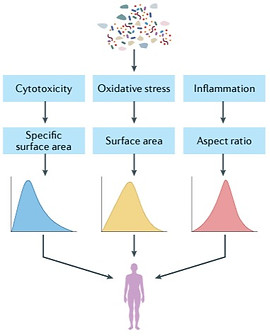
Fate and effect of polymer-coated fertilizer microplastic capsules
Aims to (a) develop an extraction method for microplastics from polymer-coated fertilizers (PCF), and (b) assess the distribution, fate, and impact of PCF-derived microplastics on the chemistry, structure, and health of soil.
ICL

Data alignment to quantify NMP in the environment and the human body
Aims to (a) develop data alignment tools that facilitate the comparison of microplastic exposure and effect data, and (b) identify data of sufficient confidence and translate them into a range of toxicologically relevant metrics.
ZonMW

Microplastics in rivers and streams
Aims to understand (a) the transport and retention mechanisms of microplastics in fluvial environments, (b) the exchange of microplastics across the streambed interface, and (c) the transport and retention of microplastics in the shallow aquifer.
Wageningen University
& CRC 1357 Microplastics
& Ben-Gurion University of the Negev
& Helmholtz Center for Environmental Research & University of Beira Interior

The impact of biofouling on fluvial microplastic transport
Aims to (a) quantify the growth of biofilms on microplastics, (b) investigate the effects of biofouling on microplastic vertical transport and resuspension, and (c) incorporate these findings in a riverine transport and fate model.
NWO (Netherlands Research Council)

Global probabilistic modelling of microplastic transport
Aims to (a) model fragmentation and fate of microplastics, (b) plastic-associated pathogen transport, and (c) microplastic risks on the global scale, including sensitivity and uncertainty in these models.
Wageningen University
& China Scholarship Council

Microplastic food web accumulation
Aims to (a) determine the microplastic affinity for chemical contaminants in the Norwegian coastal area, (b) study the food web transfer of MP contaminants from zooplankton to cod larvae, and (c) study maternal transfer from cod broodstocks to larvae.
NRC (Norwegian Research Council)

Chemical bioavailability from nano- and microplastic
Aims to (a) evaluate the chemical dynamics during digestion of plastic and food, (b) assess sorption behaviour of hydrophobic organic contaminants on plastic, (c) assess human exposure to microplastic, and (d) provide a prospective assessment on chemical vector effects.
Wageningen University
& Mendaki Foundation

Microplastic effect thresholds for aquatic species
Aims to (a) provide rational guidance on testing methods for MP, (b) assess effect thresholds for aquatic organisms, (c) understand factors influencing effect thresholds, and (d) provide guidance for environmental hazard and risk assessment.
CEFIC-LRI

Technologies for the risk assessment of microplastic
Aims at developing technologies (a) to detect nano- and microplastics in environmental samples, (b) to assess fate, hazards and effects in the freshwater environment, and (c) to provide prospective present and future risk assessments.
NWO (Netherlands Research Council)

Fate and effects of nano- and microplastic (marine)
Aims to investigate (a) nano- and microplastic pollution of the marine habitat, (b) bioaccumulation of plastic and associated chemicals by marine organisms, (c) effects of plastic ingestion, and (d) risks of food web transfer of MP.
Wageningen University



_edited.jpg)



